2013 Hyundai Veloster Turbo Review

If there is a single complaint to be made about the Hyundai Veloster, it’s that it simply doesn’t have enough power. The solution, it seems, would be to strap a turbocharger to the small 4-cylinder and increase engine output by roughly 50 percent. With Hyundai having done just that in the all-new 2013 Veloster Turbo, it’s now apparent that that’s not all it needs.
FAST FACTS
| 1. Powered by a direct-injection turbocharged 1.6L the Veloster Turbo makes 201 hp and 195 lb-ft of torque with a best-in-class power-to-weight ratio. |
| 2. In addition to the turbocharger, upgrades include a custom body kit, 18-inch wheels, sport-tuned steering, LED headlight accents, a dual center exhaust and leather heated sport seats. |
| 3. Fuel economy is rated at 26/38 mpg for the manual and 25/34 mpg for the automatic. |
| 4. The Veloster Turbo is the first Hyundai available with matte gray paint for an additional $1,000. |
| 5. Pricing starts at $21,950. |
There’s nothing inherently wrong with the Veloster Turbo. In fact, it’s quite impressive – or at least it is with a stick shift. The issue is that it’s a calculated take on building an enthusiasts car.
So what’s missing? Lots actually. There’s no limited slip differential, no upgraded suspension components, no high performance summer tires and no exhaust note. In short, there’s no passion.
There’s an absence of those finishing touches, the bits you know wound up on a car because someone at the company desperately wanted it to be the fastest, the coolest or the most fun.
TURBO ENGINE DELIVERS THE GOODS
And yet the Veloster Turbo is still fast, fun and good looking. Powering the car is a twin-scroll turbocharger that’s been mated to the brand’s 1.6-liter direct-injection 4-cylinder making 201 hp at 6000 rpm and 195 lb-ft of torque at 1750 rpm. Combined with a curb weight of 2,800 lbs, it hustles – although again that depends upon the transmission. Unlike the standard Veloster there is no dual-clutch automatic, and in its place is a conventional torque converter auto-box. That unit just seems to zap power from the engine making it feel like the power rating is closer to 160 hp.
That’s hardly the worst feature of the automatic, however. No, its biggest transgression towards performance is how the typical delay in power delivery associated with an automatic seems to upset the car’s balance when cornering. As mentioned, no changes have been made to the Veloster’s suspension components and it is perhaps that, as well as the added 88 lbs of weight the automatic adds over the front axle, that results in a tipping point when the power engages mid-corner, inducing understeer and resulting in an unnerving sensation.
STICK-SHIFT HELPS BRING THE CAR TO LIFE
Swapping for the stick-shift and it’s hard to believe this is even the same car. Along with being lighter up front, with a manual you’re always in the right gear and the car sets nicely in corners and tracks true.
The stick shift itself is perhaps the best the company has ever engineered. The shift knob does have an odd shape to it, but the throws are short, precise and light. In an era that’s moving away from the manual, it’s nice to see Hyundai spent so much effort in getting this unit right.
As is often the case, when equipped with the stick-shift the Veloster Turbo feels noticeably faster. What’s missing though is an impressive exhaust note. Instead, you just hear the whooshing of air. Making this all the more disappointing is the obvious time and effort spent stylizing the two massive central exhaust pipes.
Tested on both the street and auto autocross course set up for just this purpose, the Veloster Turbo’s strengths and weaknesses show through. The 18-inch wheels and low profile 215/45/18 tires don’t make the ride quality as firm as expected, though larger bumps to reverberate through the cabin and the V-beam solid rear axle amplifies the unsettling effect of bumps and uneven road surfaces in the rear.
Despite full boost at 1750 rpm, it’s still not uncommon to exercise patience, waiting for the thrust to come on.
While items like upgraded suspension components and a limited slip differential would make the Veloster Turbo more capable, it’s still plenty of fun and they aren’t what we’d call required. Performance improvements that have been made include larger front brake rotors as well as a reworked steering system that has no dead-spot common among Hyundai products. It’s undeniably better than the base car’s setup, though it still fails to deliver responsiveness that feels natural.
UNIQUE LOOK GAINS AGGRESSION
Where Hyundai certainly did take note of the hot hatch rivals is in the Veloster Turbo’s styling. Already an incredibly unique product with its extra passenger side door, the Turbo model gets a complete aero kit, LED taillights and LED headlight accents, as well as a front grille that would make an Audi A8 feel insecure.
With such a unique design, the choice of paint can make or break the looks of the car, with a conventional black diluting this vehicular can of Red Bull into a sedative, while bright colors make its lines pop. An available $1,000 matte gray job is easily the must-have shade. One also can’t help but take notice of the 18-inch wheels with chrome inserts and the bright metallic red Turbo badge on the back.
PLENTY OF STANDARD EQUIPMENT
Inside the Veloster Turbo maintains much of the naturally aspirated car’s components though with higher equipment levels as standard and heated black leather seats with colored accenting (blue on some models) and Turbo script on the headrests. The seats look quite well bolstered, but fail to live up to their promises, with the side sections too far away from the driver’s body to matter.
Priced at $21,950 to start, that’s a $4,500 increase over the standard Veloster, although Hyundai claims that taking into account the added content the difference is more like $1,600. Standard features in the Veloster Turbo include a leather wrapped steering wheel and shift knob, alloy pedals, an 8-speaker audio system with 7-inch touch-screen display and Bluelink telematics, Bluetooth, a tilt and telescopic steering wheel and a proximity entry key with push-button ignition.
Keeping the buying process simple, something Hyundai prides itself on, only an Ultimate Package option is available, which adds automatic headlights, navigation with a rear view camera, backup sensors and a panoramic sunroof.
Add $1,000 to the base price to upgrade to the automatic, or better yet, don’t. Add the Ultimate Package for a retail sticker of $24,450 plus the auto.
Priced extremely competitively with current hot hatch and sport compact rivals, the Veloster Turbo is certain to deliver lower ownership costs due to its impressive fuel economy rating of 26 mpg city and 38 mpg highway. Plus, it runs on regular fuel, not premium. The automatic transmission drops those numbers by one in the city and 4 mpg on the highway – yet another reason to avoid it.
THE VERDICT
An impressive machine based on all the available statistics, the Veloster Turbo is undeniably fun but fails to deliver that wow factor.
In nearly all categories, Hyundai’s value approach has allowed it to rise to the top, but not here. After all, this is a segment where value is far from being a main priority and where ‘fun-to-drive’ comes standard.
Regardless, Hyundai will sell lots of Veloster Turbos by nature of the fact that it delivers the goods on paper while in reality isn’t too hard-edged and won’t scare off the average consumer. A hot hatch for all, enthusiasts need not apply.
LOVE IT
- Best stick shift Hyundai has made
- Plenty of power
- Great looks
- Matte gray paint option
LEAVE IT
- Passion is absent
- No exhaust note
- Automatic ruins the car

With AutoGuide from its launch, Colum previously acted as Editor-in-Chief of Modified Luxury & Exotics magazine where he became a certifiable car snob driving supercars like the Koenigsegg CCX and racing down the autobahn in anything over 500 hp. He has won numerous automotive journalism awards including the Best Video Journalism Award in 2014 and 2015 from the Automotive Journalists Association of Canada (AJAC). Colum founded Geared Content Studios, VerticalScope's in-house branded content division and works to find ways to integrate brands organically into content.
More by Colum Wood















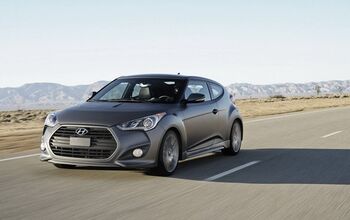
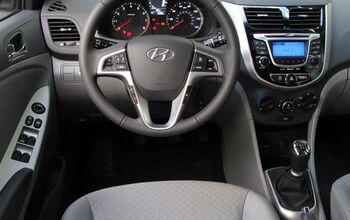
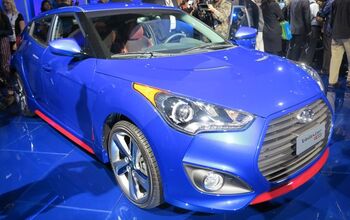





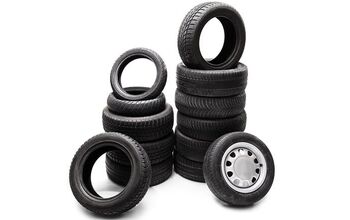
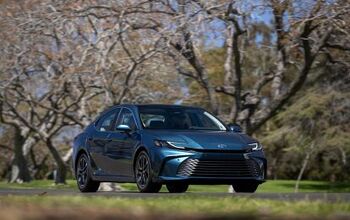
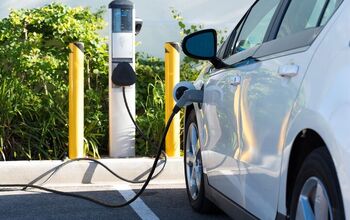



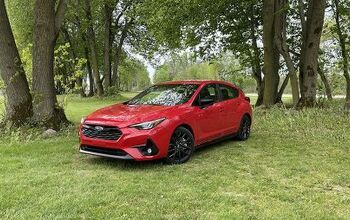
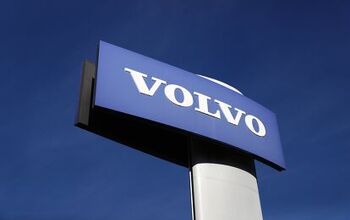
Comments
Join the conversation
had my veloster turbo now for about two months i have put over 7000 miles on it, no problems or issues, and just fyi after about 2500 miles exhaust gets louder and does feel a bit more responsive. all the reviews are before the car is broken in, after that first 2500 its a different car..believe me or not but i drive my velsoster turbo over 100 miles a day, everyday so i know this car like the back of my hand
Hyundai has Never made a car that has a great drive train / clutch. That alone would be a deal killer. Then add that owners have complained about the reliability after 20,000 miles ... No Thanks. The new Subaru WRX is on my list & I'll save up for that car ! Truly Blows away this VT !